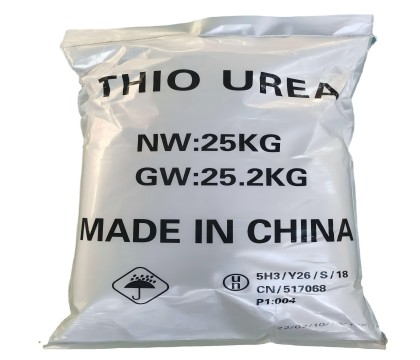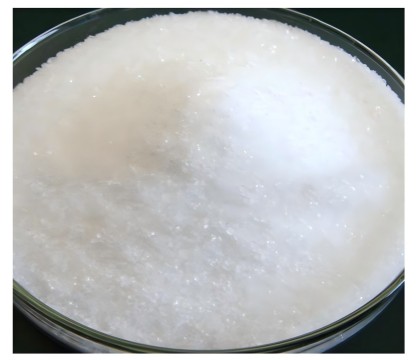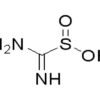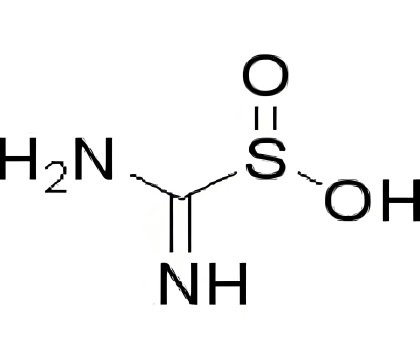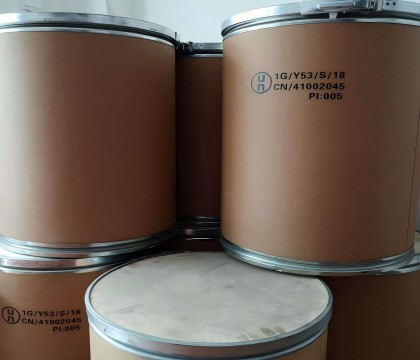Formamidine Sulphinic Acid
1. Physical properties and chemical properties
Thiourea dioxide (methamidine sulfenic acid formamidine sulfinic acid; degafas; fas; aminoamino thane sulfenic acid; aminoiminomethanesulfinic acid td reducing agent)
Formula: (nh 2) 2 cso 2, n2h4cso2, ch4n2so2, ch4n2o2s
Appearance: white crystal powder
Molecular weight: 108.12
Melting point: 126℃
cas no.: 1758-73-2 or 4189-44-0 (cas registry number or cas number, cas rn, cas #), also known as cas accession number, is the only digital identification code of a substance.
h.s.no. : 2930.90.90.90 (harmonized system code, the customs code of the goods)
Unnon.: 3341 (United Nations dangerous goods number)
ec#:217-157-8
ph:4(1%solution)
Hazard level: 4.2
Solution point: 30 g / l (20℃)
2. product property
(1) This product is a white powder crystal, the melting point of 126 degrees of decomposition, the aqueous solution is weakly acidic, is a compound of neither oxidation nor reduction.
(2) This product is stable in acid solution, but it is easy to decompose under alkaline conditions, generating a strong reducing sulfonic acid, so that this product can control the reducing effect.
(3) Compared with the insurance powder, this product has a high reduction potential, and the decline speed of the reduction potential is slow, only 1 / 5 of the reduced reduction potential of the insurance powder.
(4) This product has good safety performance, and has no pollution during production and use.
3. Product technical indicators:
Professional (industry) standard: Chemical Industry standard of the People’s Republic of China (hg / t 3258-2010)
4. Application:
(1) printing and dyeing industry used as a reducing agent, cotton, wool, chemical fiber bleaching reductive agent and sulfide dye also
Raw agent, disperse dye printing, textile peeling, reprocessing or floating color and other places can be used.
(2) Used for paper pulp and bleaching in the paper industry.
(3) the latex agent in the camera industry can make the phase paper exposure part show high stability.
(4) Chemical fiber modified catalyst, can make the modified fiber is not yellow.
(5) Antioxidants used in organic synthesis.
5. Detailed explanation of the product use
1. Fiber industry
(1) Bleach
Thiourea dioxide on wool, silk, silk, cotton and other natural fiber bleaching effect is very good, especially in the weak alkaline environment is more prominent, bleaching does not damage the fiber, and the treatment of bleach waste liquid is relatively easy.
(2) Staining
The staining of dispersed and sulfide dyes can be done before 1 / 10 of bisulfite, but because the reduction potential of thiourea dioxide is very high, it should be noted that the type of the dye or the concentration of thiourea dioxide will change accordingly.
(3) Reduce and wash
Because of the strong reduction of thiourea dioxide, it is very effective for the reduction washing of dispersed dye staining, and because of the high stability in the alkaline reduction bath, 1 / 4 of the previous bisulfite used can be completed, which is a very economical product.
(4) Printing printing
Due to the high reduction potential and strong stability of thiuron dioxide, all extraction prints of materials can be used.
(5) Anti-shrinkage processing
Thiurrea dioxide can be promoted when processing wool with thiourea dioxide and polyamide
Absorption of chemical agents by fibrfibers.
(6) Decolor
Because the reduction force of thiourea dioxide is stronger than other chemical agents, the decoloring ability of dyes is strong, which can be used for restaining and cylinder body washing.
2. Pulp & Paper Industry:
(1) Wood pulp
Thiuron dioxide is suitable for the reducing bleaching of high-step retention pulp such as gp, rgp, tmp, especially in neutral-weakly alkaline environment, and high-white pulp can be obtained after mixing with dip bleaching.
(2) Chemical paper pulp
In the bleaching of thiourea dioxide to kp, sp, soda pulp, colors can be obtained with bleach before, and for semi-bleached pulp H 2 O 2 and thiurrea dioxide, non-chlorine bleaching can be carried out. For multistage bleaching can be used with a combination of previous chlorine bleach and thiuron dioxide. Soda pulp is desurated with thiuron dioxide. The kp line of chlorine is being bleached to prevent intensity.
(3)DIP
Old newspapers, old magazines and qualitative ancient paper ink when the general alkaline treatment will make low white. Thiuron dioxide can restore whiteness, and other bleaching agents such as dip and h2o2. In particular, due to the recent resource protection campaign, the prevailing recycling of old newspapers, and the demand for non-chlorinated bleaching.
3. Synthetic fibers
When acrylonitrile fiber spinning, acrylonitrile fiber and thiuron dioxide are placed in a spinning bath or impregnated in an aqueous solution containing thiuron dioxide. After drying can get high white quality products. Thiuron dioxide can improve the staining properties.
4. Polymerization reaction
(1) Ethylene compounds
Most of the ethylene compounds in organic peroxide, persulfate or hydrogen peroxide oxidant and reducing agents such as thiourea dioxide as catalysts.
(2) Acrylonitrile compound
Polymerization containing more than 80% acrylonitrile compound, persulfate or hydrogen peroxide and thiuron dioxide as a redox polymerization catalyst.
(3) Lopadiene compound
The latex polymerization of chloropadiene compounds uses hydrogen peroxide or persulfate and thiuron dioxide as redox polymerization catalysts.
(4) Other
In order to improve cotton, hemp, grafting polymer ethylene compounds, styrene compounds, etc., hydrogen peroxide or persulfate and thiourea dioxide are used as catalysts.
5. Synthesis of organic compounds
Thiuron dioxide reduces aldehydes to primary ethanol, ketones to secondary ethanol, or nitro group in organic barrier compounds to ammonia group, and thiuron dioxide in organic sulfide to sulfur generation.
6, for the synthesis of inorganic compounds
Thiuron dioxide can be used to recycle valuable metals such as platinum, silver, and uranium, and to remove heavy metals such as iron, chromium, and nickel.
7. Film industry
In the film industry, thiourea dioxide improves the photosensitivity of silver compounds, using an antifouling agent as a sensitizer, or as a reducing agent of heavy amino fuel.
8. Washing agent
When washing, thiuron dioxide not only has the bleaching effect, but also can remove the iron, blood and other dirt in the cloth.

